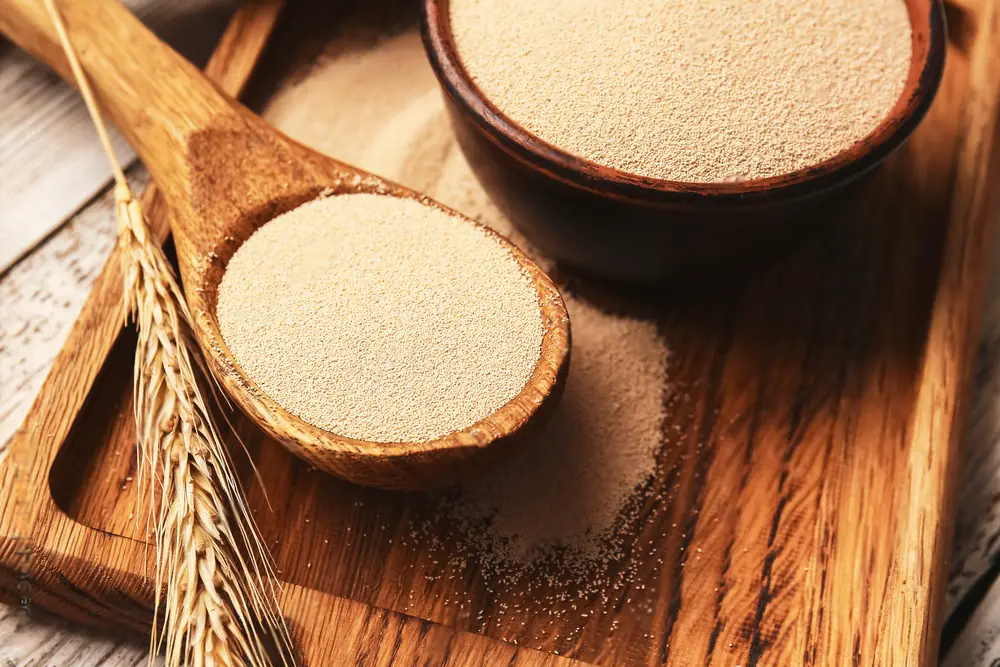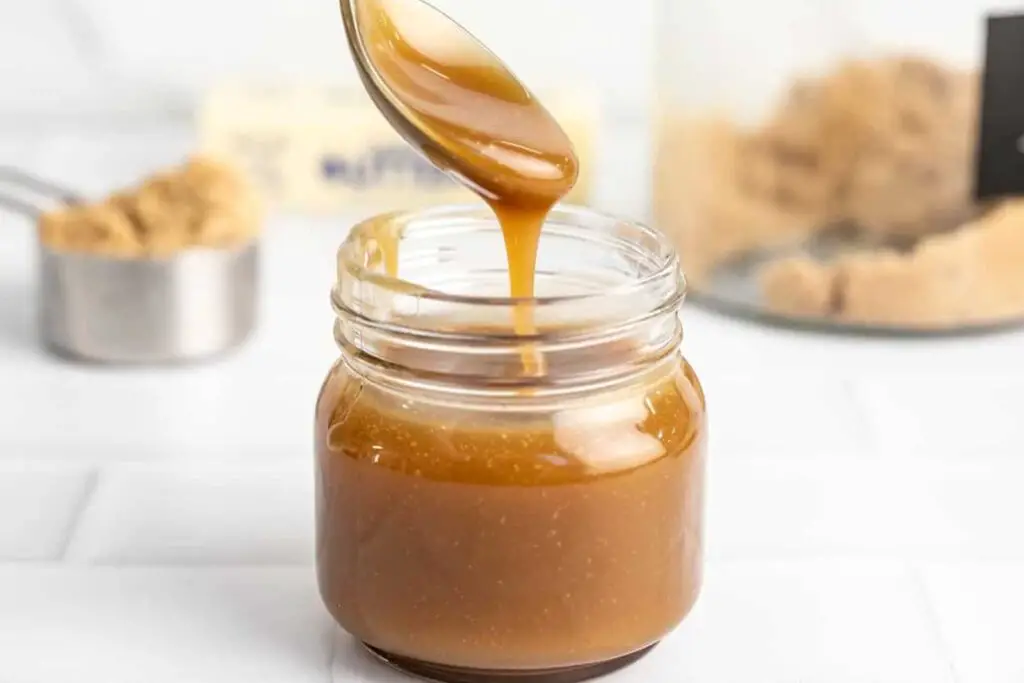
Yeast, a microscopic yet essential ingredient in the world of baking and fermentation, holds the power to transform simple ingredients into a wide array of flavorful and airy creations. This single-celled organism plays a pivotal role in the process of bread rising, beer brewing, and other fermentation-based culinary endeavors. The magic of yeast lies in its ability to convert sugars into carbon dioxide and alcohol, resulting in the expansion and light texture of doughs and the development of complex flavors in various beverages. However, when working with yeast for baking or brewing projects or when acquiring larger quantities for ongoing culinary exploration, it can be challenging to use it all before its potency starts to wane.
Freezing yeast emerges as a practical and effective method to preserve its enzymatic activity and maintain its ability to leaven doughs and contribute to fermentation processes, ensuring that each batch of bread, pizza, or home-brewed beer captures the essence of well-risen excellence and expertly developed flavors, even when fresh yeast isn’t readily available or when you wish to maintain its vitality over an extended period. In this guide, we will explore the best practices for freezing yeast, allowing you to savor the richness of this humble yet transformative ingredient and elevate your culinary creations with the essence of perfectly preserved yeast, without the need for immediate use or concerns about its effectiveness.
Here are the simple steps to freeze yeast:
Step 1: Choose the Right Type of Yeast
When embarking on the journey of freezing yeast, the initial and vital step is to carefully select the appropriate yeast type, aligning it with the specific purpose you have in mind. Yeast comes in distinct forms, each tailored to varying culinary or brewing endeavors. The most prevalent types of yeast encountered in home kitchens are active dry yeast and instant yeast, renowned for their versatility and suitability for a wide array of baking projects. On the other hand, fresh yeast, also known as cake yeast or compressed yeast, is commonly favored by professional bakers and commercial operations due to its distinct properties.
- Active dry yeast stands as a reliable choice for many home bakers. It’s conveniently available and boasts a longer shelf life compared to its fresh counterpart. Active dry yeast is designed to be mixed with water before use, a step that kick starts its activation process. This type of yeast is perfect for recipes where a slow rise is desired, contributing to the development of complex flavors in baked goods.
- Instant yeast, often referred to as rapid-rise yeast, offers expediency and convenience. Unlike active dry yeast, it can be directly mixed with dry ingredients without prior rehydration. It propels the fermentation process swiftly, making it an ideal option for those seeking a quicker rise in their dough.
- Fresh yeast, distinct in its soft and pliable texture, boasts a higher moisture content. Its application commonly extends to large-scale production, where its potency and rapid fermentation make it a prized choice. Fresh yeast’s composition is such that it is directly blended into dough without requiring rehydration.
To ensure your chosen yeast type performs optimally, it is paramount that the yeast is fresh and well within its expiration date. The vitality of yeast cells diminishes over time, which can impact their ability to facilitate fermentation effectively. This holds true for all yeast varieties, whether dry or fresh. Therefore, prior to freezing, assess the yeast’s expiration date and overall quality, as this will significantly contribute to the success of your future baking or brewing endeavors.
Decision to freeze yeast hinges upon a thoughtful selection of the most suitable type, considering its intended use and your own preferences. Be it the dependable versatility of active dry yeast, the swift action of instant yeast, or the specialized application of fresh yeast, understanding the distinctions among these types will empower you to make an informed choice that sets the stage for successful culinary creations.
Step 2: Prepare for Freezing
Once you’ve determined the ideal type of yeast for your intended use, the next critical step in the yeast-freezing process is meticulous preparation. Especially when dealing with a substantial quantity of yeast, strategic division into smaller portions can significantly impact the quality and convenience of your future baking or brewing endeavors. This practice is a prudent measure to prevent unnecessary thawing and refreezing, which can potentially compromise the yeast’s overall effectiveness.
Strategic Portioning for Optimal Quality
- Yeast, whether in dry or fresh form, is a living organism composed of microscopic cells that play a pivotal role in the fermentation process. To maintain these cells’ viability and ensure they retain their potency, it’s essential to minimize any exposure to temperature fluctuations and moisture. When yeast is repeatedly thawed and refrozen, its cellular structure can suffer damage, leading to a reduction in its capacity to leaven and ferment.
- By dividing your yeast into smaller portions that mirror the quantities you typically employ in a single baking or brewing batch, you create a system that limits the need for excess thawing and refreezing. This practice effectively shields the yeast from unnecessary stress, preserving its integrity and enhancing its performance in future applications.
Convenience in Usage
- Beyond safeguarding yeast quality, portioning also enhances convenience. When you need to use yeast for a particular recipe, having pre-portioned amounts readily available eliminates the need to defrost more yeast than necessary. This not only conserves time but also reduces the chances of waste. Your yeast remains in pristine condition, ready to infuse life into your dough or brew with minimal delay.
- Place these portions into individual airtight containers or resealable freezer bags. The goal is to minimize the air inside the container, which could lead to freezer burn or moisture accumulation. Squeeze out excess air from the bags or choose appropriately sized containers that leave minimal headspace.
By adhering to these strategic portioning practices, you set the foundation for preserving yeast quality and simplifying your future culinary endeavors. The investment of time and care in this step ensures that your yeast remains a dependable and efficient ally in achieving delectable baked goods or flavorful brews.
Step 3: Portion and Seal
As you delve deeper into the process of freezing yeast, the next pivotal stage involves the careful portioning and secure sealing of the yeast. This step is of paramount importance as it directly influences the yeast’s preservation, preventing degradation and maintaining its potential to bring life to your culinary creations.
Portioning for Optimal Consistency
- When dealing with yeast, precision is key. For both dry yeast variations—namely active dry and instant yeast—accurate measurement is essential. Begin by determining the quantity of yeast typically used in a single batch of your preferred recipes. This can be done using a kitchen scale to ensure accuracy. By portioning the yeast according to your standard recipe requirements, you ensure consistent and reliable outcomes in future baking or brewing endeavors.
Container and Bag Considerations
- For dry yeast types, once you’ve determined the appropriate portions, transfer the yeast into suitable storage vessels. Opt for airtight containers made from materials that resist moisture and air infiltration, such as plastic containers or glass jars with tightly sealing lids. Alternatively, resealable freezer bags can be used. When employing bags, remember to expel as much excess air as possible before sealing them shut. This minimizes the potential for freezer burn or moisture intrusion that could compromise the yeast’s quality.
- If you’re working with fresh yeast, which tends to have a higher moisture content and a softer texture, a different approach is necessary. Begin by dividing the fresh yeast into portions that align with your standard recipes. Following this division, wrap each portion securely in plastic wrap. This protective layer prevents moisture and air exposure, preserving the yeast’s potency and overall quality.
Air Exclusion for Longevity
- When sealing containers or bags, the exclusion of air becomes a central consideration. Oxygen and moisture can lead to the deterioration of yeast cells, affecting their ability to leaven and ferment effectively. By creating an environment within the storage vessels that is low in oxygen and moisture, you extend the yeast’s shelf life and maintain its performance at its peak.
Fresh Yeast’s Unique Requirements
- The distinctive attributes of fresh yeast necessitate specialized treatment. Due to its higher moisture content and softer consistency, wrapping each portion tightly in plastic wrap provides an additional layer of protection against potential moisture intrusion. This practice aids in preserving the yeast’s structural integrity and potency.
Freezing yeast mandates a meticulous approach to portioning and sealing. Whether working with dry yeast or fresh yeast, precision in portioning and the selection of appropriate storage vessels are crucial to the yeast’s longevity and effectiveness. By following these guidelines, you are equipping yourself with the tools to keep your yeast in prime condition, ready to contribute to your culinary or brewing aspirations whenever the need arises.
Step 4: Label and Date
As you continue your journey through the process of freezing yeast, one often underestimated yet immensely valuable practice is the act of labeling and dating. This seemingly simple step is a cornerstone of effective organization and management of your yeast inventory, ensuring that your yeast remains not only viable but also easily accessible for your future culinary or brewing endeavors.
The Importance of Clear Identification
- Yeast comes in various forms, each tailored to specific applications. Depending on your culinary or brewing needs, you might be working with active dry yeast, instant yeast, or fresh yeast. Each of these types possesses unique attributes that make them suited for different purposes. In the busy realm of the kitchen or brewing space, it’s easy to lose track of which type of yeast resides within each container or bag.
- By clearly labeling each container or bag with the specific type of yeast it contains, you eliminate confusion and prevent potential mishaps. This ensures that when you reach for your frozen yeast, you have an immediate understanding of what’s inside and how it can best be applied.
Tracking Yeast Age
- Time is a factor that significantly impacts the viability and performance of yeast. As yeast ages, its activity diminishes. This can lead to less effective fermentation and leavening. To manage the aging process and prioritize the use of the older yeast, it’s essential to date each container or bag with the freezing date. This information provides you with a clear understanding of when the yeast was stored, allowing you to employ a first-in, first-out (FIFO) approach.
Rotation System for Quality Assurance
- Employing a rotation system helps ensure that your yeast inventory remains fresh and of optimal quality. By utilizing the labeled dates, you can prioritize the use of the older yeast first. This approach reduces the likelihood of having yeast that’s been stored for an extended period and might have lost some of its potency.
- Implementing a rotation system also encourages a sense of efficiency and organization in your baking or brewing space. It helps you avoid situations where older yeast is forgotten or pushed to the back of the freezer, where it may remain unused for extended periods.
Ensuring Long-Term Success
- Labeling and dating are not just optional steps in the yeast-freezing process—they are essential practices that contribute to the long-term success of your culinary and brewing endeavors. By clearly identifying the type of yeast and the date of freezing, you streamline your workflow, prioritize yeast use based on freshness, and maintain a seamless rotation system that supports consistent, high-quality outcomes. These small efforts can make a significant difference in the final results of your baking and brewing creations.
Step 5: Store in the Freezer
As you proceed in the process of freezing yeast, the placement of your meticulously portioned and sealed yeast containers or bags within the freezer assumes a pivotal role in ensuring the yeast’s preservation and longevity. This step involves strategic positioning that takes into account the freezer’s internal environment and temperature fluctuations, which can directly impact the yeast’s overall quality and viability.
Optimal Storage Conditions
- Freezers are designed to maintain a consistent and low temperature, preserving the freshness of stored items over time. However, not all areas within the freezer are created equal in terms of temperature stability. For the best preservation of your frozen yeast, it’s recommended to place the yeast containers or bags in the coldest part of the freezer. This typically includes the back or bottom shelf, where the temperature remains relatively constant and less susceptible to fluctuations.
Preventing Temperature Fluctuations
- Temperature fluctuations, even within a freezer, can potentially harm the yeast. Yeast, whether dry or fresh, is a delicate microorganism that responds sensitively to environmental changes. Exposure to warmer temperatures—even if it’s just a temporary shift—can compromise the yeast’s vitality and effectiveness.
- By positioning your yeast containers or bags in the coldest part of the freezer, you create a stable environment that minimizes the risk of temperature fluctuations. This consistent and low temperature setting ensures that your yeast remains in an optimal state, ready to contribute its fermentation and leavening prowess whenever you call upon it.
Planning for Accessibility
- While placing the yeast in the coldest area is crucial, it’s also important to consider accessibility. As you position your yeast containers or bags, think about how you’ll retrieve them in the future. Organize the freezer space to ensure that the yeast is easily within reach. Proper organization not only promotes efficient use of the yeast but also reduces the potential for damage to the yeast or other frozen items when retrieving them.
The Key to Longevity
- The freezer’s role in the yeast-freezing process cannot be overstated. It acts as a safeguard against time and external factors that could compromise the yeast’s viability. By storing your yeast containers or bags in the coldest part of the freezer, you’re taking a proactive step to ensure that your yeast remains at its best, retaining its full potential to elevate your baked goods and brewed creations.
Making a strategic decision about where in your freezer to position your yeast. This choice directly influences the yeast’s quality and performance, contributing to the overall success of your culinary or brewing endeavors.
How long can yeast last in the freezer?
Dry yeast can last up to 2 years in the freezer if stored airtight. Fresh yeast retains viability for about 3 months when frozen. Proper storage minimizes degradation.
Step 6: Thaw the Frozen Yeast
As you approach the culmination of your yeast-freezing journey, there’s a critical step that bridges the transition from storage to application: testing the yeast’s viability. Regardless of whether you’re dealing with dry yeast or fresh yeast, it’s essential to assess the yeast’s activity and ensure it’s still in optimal condition before incorporating it into your culinary or brewing creations.
Why Test Yeast Viability?
- Yeast is a living organism, and its effectiveness hinges on the vitality of its cells. Throughout the freezing process, yeast’s activity can be influenced by various factors, including freezing and thawing. To avoid setbacks in your baking or brewing projects, it’s crucial to verify that the yeast remains capable of performing its fermentation and leavening functions as intended.
Testing Dry Yeast Viability
- For dry yeast types such as active dry yeast or instant yeast, the viability test is relatively straightforward. Begin by mixing a small amount of yeast with warm water and a pinch of sugar. The sugar provides a mild food source for the yeast. If the yeast is still active and viable, you will observe the mixture foaming and bubbling within a few minutes. This foaming indicates that the yeast cells are producing carbon dioxide gas, a byproduct of fermentation.
Testing Fresh Yeast Viability
- When it comes to fresh yeast, the process is slightly different due to its unique composition. To test the viability of fresh yeast, crumble a small portion into warm water that’s been infused with a touch of sugar. If the fresh yeast dissolves into the water and subsequently begins to foam, this indicates that the yeast is still active and capable of fulfilling its role in fermentation.
The Significance of Viability Testing
- Viability testing offers a level of certainty and assurance that the yeast you’re about to use will yield the desired results. If the yeast fails the viability test—meaning it doesn’t foam or dissolve—it’s an indication that its potency has been compromised, and using it in your recipe may lead to disappointing outcomes.
By conducting this simple yet essential test, you empower yourself to make informed decisions about whether to proceed with the yeast you’ve stored or acquire fresh yeast for your project. This quality control measure ensures that your baking or brewing journey commences on the right foot, with yeast that’s ready to contribute to the texture, flavor, and rise of your creations.
Other related questions
Can you refreeze yeast?
Refreezing yeast is generally discouraged due to potential quality loss. Repeated thawing and freezing can damage yeast cells, affecting their viability and fermentation capacity. It’s best to portion yeast before freezing to avoid the need for refreezing.
How do I know if the yeast has gone bad after being frozen?
Signs of bad yeast after freezing include reduced activity during viability tests – minimal foaming for dry yeast or lack of dissolution and foaming for fresh yeast. Stale smell, clumping, or discoloration also indicate degradation. Trust fresh yeast for optimal results.
Can you freeze yeast mixed with flour or water?
Freezing yeast mixed with flour or water is not recommended. Yeast’s activity can be affected by freezing, leading to inconsistent results. Freeze yeast separately, then incorporate it into dough or recipes after thawing for optimal baking outcomes.
Can frozen yeast be used for baking bread and other recipes?
Yes, frozen yeast can be used for baking bread and other recipes. Thaw yeast in the refrigerator and allow it to reach room temperature before using. It might require slightly longer proofing time but can yield satisfactory results.
How does freezing affect yeast’s potency?
Freezing can slightly reduce yeast’s potency due to possible damage to cell walls. While yeast can recover, longer proofing times may be needed. Test yeast’s activity before use after thawing to ensure optimal rising in baking.
Can you freeze yeast with sugar or salt?
Freezing yeast with sugar or salt is possible, but it’s advisable to avoid direct contact. Sugar or salt might affect yeast’s viability during freezing. Freeze yeast separately and add sugar/salt when incorporating yeast into recipes after thawing for consistent results.
Are there any considerations for freezing yeast in warmer climates?
In warmer climates, freezing yeast requires precautions. High humidity can lead to moisture absorption and decreased yeast activity. Store yeast in airtight containers with moisture absorbers, freeze in small portions, and ensure proper sealing to maintain yeast quality in warm conditions.








